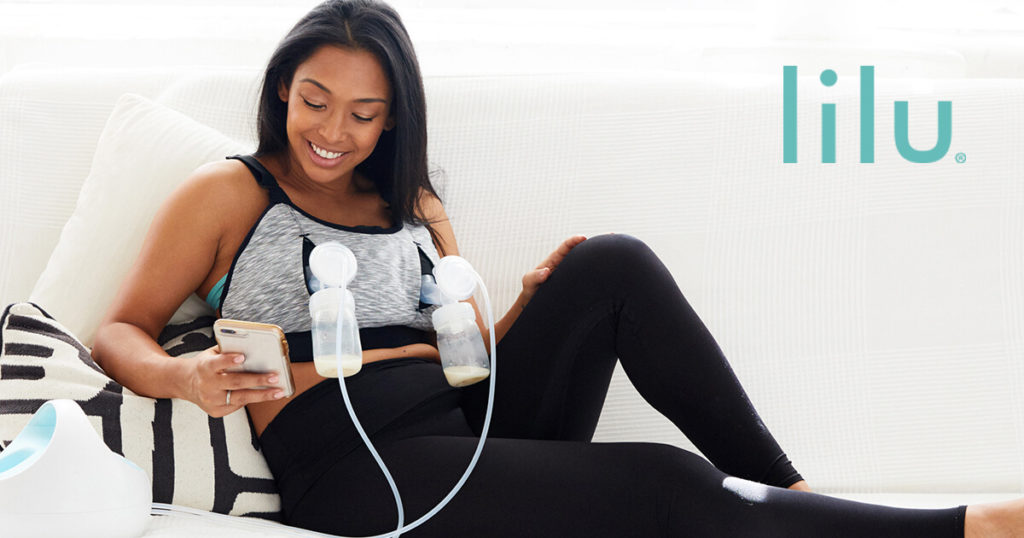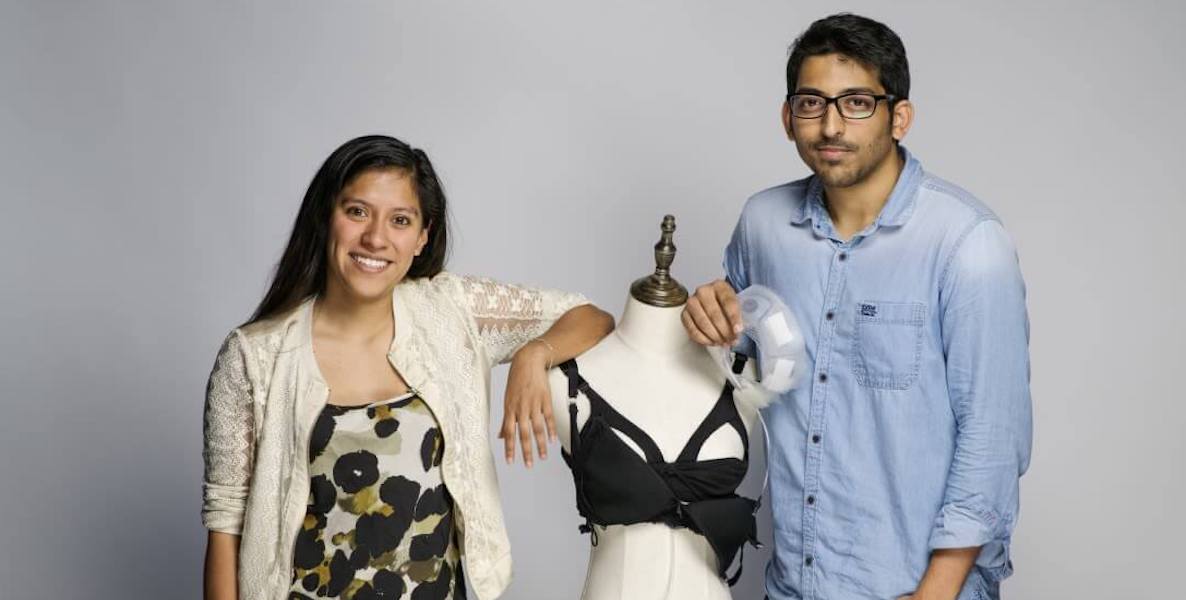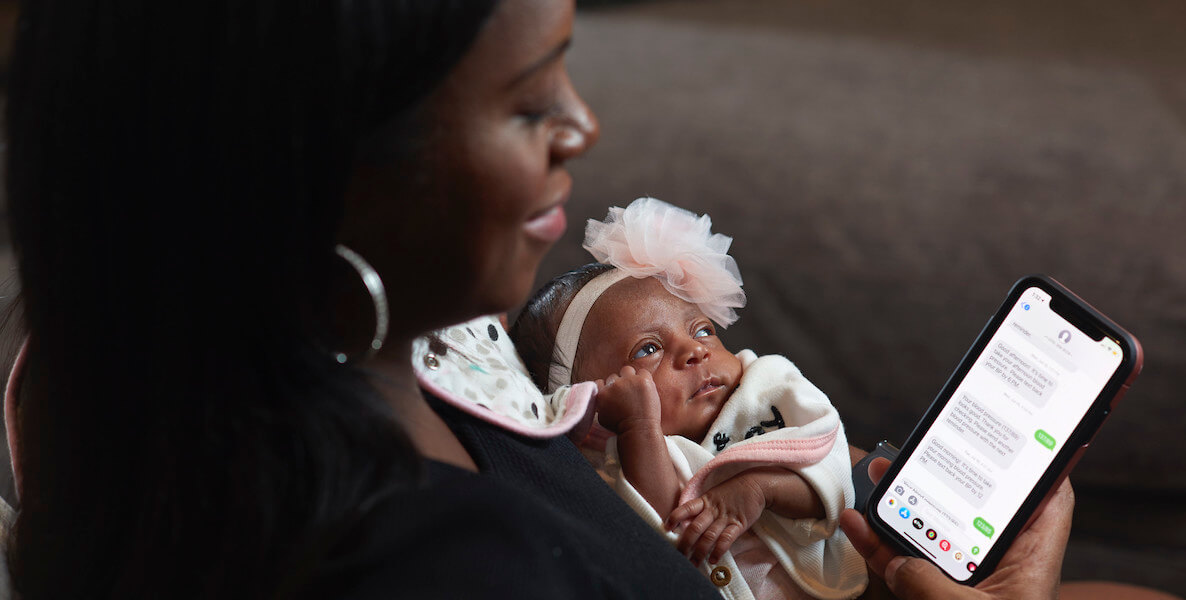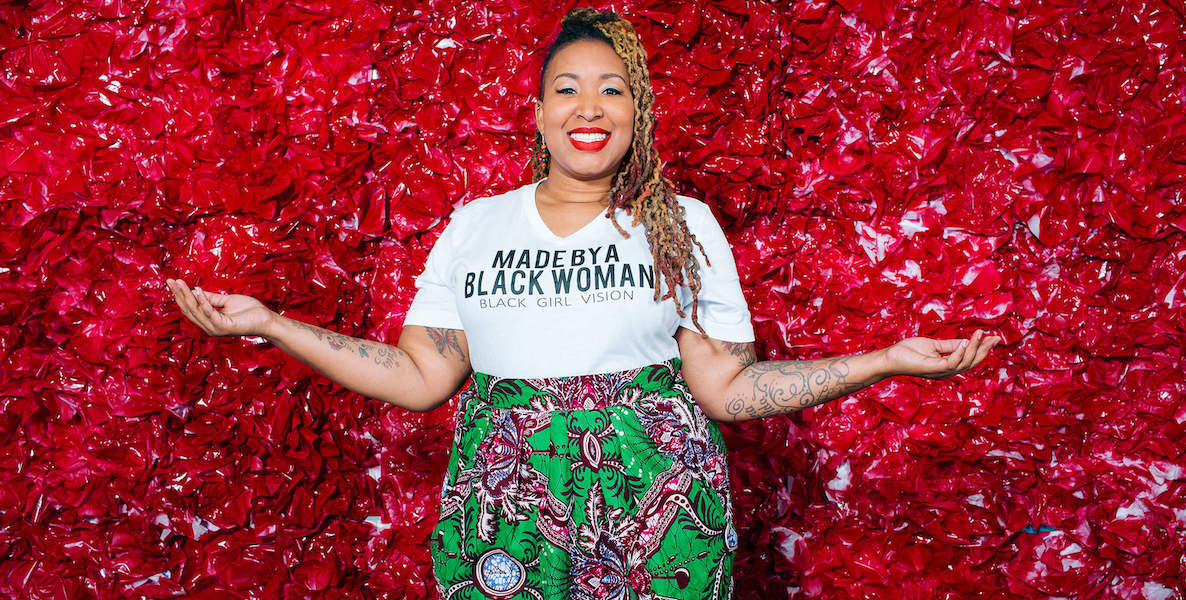On paper, entrepreneur Adriana C. Vázquez is an unlikely candidate to transform the $1.4 billion global breast pump market, just one portion of the global breastfeeding supplies market that is expected to reach $6.17 billion by 2021.
For one thing, she identifies as a Mexican woman, and Latin-American female founders traditionally receive a mere fraction of the venture capital funding of their white, male peers. For another, Vázquez is not a mother.
But in her career in fintech and, later, while in Penn’s Masters in Product Design program, she was surrounded by working moms who candidly shared their pumping challenges with her.
“My manager in fintech returned from maternity leave, and even with all of the support in our workplace, like a dedicated pumping room, it was still so hard for her, logistically and emotionally,” Vázquez says.
![]() Then Vázquez started her masters program where, coincidentally, two of her professors and a colleague were also coming back from maternity leave. “One is a great engineer, another is this really talented designer and the other is a successful entrepreneur. They’re very tech-savvy, design-oriented problem solvers, and yet when it came to breast pumping, they all had myriad problems,” Vázquez says.
Then Vázquez started her masters program where, coincidentally, two of her professors and a colleague were also coming back from maternity leave. “One is a great engineer, another is this really talented designer and the other is a successful entrepreneur. They’re very tech-savvy, design-oriented problem solvers, and yet when it came to breast pumping, they all had myriad problems,” Vázquez says.
One had preeclampsia and had to exclusively breast-pump, in order to meet her breastfeeding goals; the others, despite their eminence in engineering and design, felt completely disappointed and disheartened by their pumping output, and by how utterly lacking breast-pump technology was.
As her peers struggled, Vázquez was drawn to their plight.
“All of these women feel like it’s their fault that it’s not working and they’re feeling so guilty when, in reality, more often than not moms do face complications with breastfeeding and breast pumping,” she says. “It opened my eyes to the fact that no matter how advanced we are in terms of technology, there was this huge gap when it came to something as ‘natural’ as breastfeeding and breast pumping.”
Vázquez decided to focus her Penn Masters thesis on improving breast-pumping technology and partnered up with a like-minded fellow grad student, Sujay Suresh Kumar, who she met during an embedded systems class in 2015. Suresh Kumar was working on his Masters in Electrical Engineering; previously, he’d co-founded Jyothi, an organization working to secure better rights and safety for women in India.
“No matter how advanced we are in terms of technology, there was this huge gap when it came to something as ‘natural’ as breastfeeding and breast pumping,” Vázquez says.
Last September, their team—with Vázquez as CEO, Suresh Kumar as CTO, and Shahir Salyani, a Wharton grad, as Head of Business Development—debuted Lilu, a nursing bra that incorporates massage to help moms produce more milk, more easily.
Pumping Power
For the uninitiated: Breast pumping is what it sounds like—extracting breast milk, via any number of newfangled devices, for storage and future use for bottle-feeding.
Over 85 percent of breastfeeding women have to use breast pumps during some part of their lactation journey. As with all areas of healthcare, there are great disparities in breast-pumping resources. While some women are privileged to access hospital-grade and top-of-the-line breast pumps and accessories out-of-pocket or through insurance coverage, not all moms are as fortunate.
In 2010, the Affordable Care Act required insurers to cover a pump and visits to lactation consultants, and the IRS categorizes breast pumps tax-deductible; but many insurers cover no more than archaic manual devices that are frustrating and ineffective at milk removal.
Add to that the fact that while some workspaces have dedicated lactation rooms for breastfeeding moms and all are expected, by law, to have policies that support breastfeeding, many workplaces are simply not suited to lactation. All of which presents huge obstacles to nursing mothers, particularly the six percent who, due to their babies’ or their own medical issues, must rely exclusively on pumping—and it burdens low-income working mothers the most.
And yet it’s not so simple to walk away from breastfeeding and rely solely on formula. Research continues to show the health benefits of breastmilk, putting enormous medical and societal pressure on moms to nurse for their child’s first year of life. The CDC, UNICEF and World Health Organization recommend that moms feed their babies breast milk exclusively for the first six months of life.
![]() In their early research, Vázquez and Suresh Kumar had quickly found that breast pumps, in their current iteration, operate by mimicking babies’ sucking motion—but in the process, they can compress milk ducts, which limits the flow of viscous breast milk through them; and breast pumps overlook the other strategies babies naturally use when nursing: the movement of the tongue, the kneading of the breast, the warming of it.
In their early research, Vázquez and Suresh Kumar had quickly found that breast pumps, in their current iteration, operate by mimicking babies’ sucking motion—but in the process, they can compress milk ducts, which limits the flow of viscous breast milk through them; and breast pumps overlook the other strategies babies naturally use when nursing: the movement of the tongue, the kneading of the breast, the warming of it.
Research shows that breast massage and warmth may be effective in increasing milk supply. But massage requires the use of your hands, and considering that many new moms spend hours a day pumping, including sessions at the office (and, these days, while working from home), that time is often better-spent multitasking, not tying up your hands further.
The gap in efficiency was what Vázquez and Suresh Kumar decided to focus on. “If we could make it even 10 percent or 20 percent easier for moms to breast pump effectively, I felt that that would be moving the needle,” Vázquez says.
Over the course of their grad programs and beyond, Vázquez and Suresh Kumar iterated hundreds of prototypes of a hands-free massaging bra; at one point, in a fast-tracked group of sessions known as design sprints, the team invited a cohort of new moms to test their revised product every Wednesday for three months straight, documenting mothers’ milk output and reported comfort.
There were design bumps along the way, of course. At one point, for example, they had a version of the bra that a user would have to plug into the wall, and the mechanism that powered the massage was external to the bra. “We quickly learned that was too clunky and too much of a headache,” Vázquez says. They got feedback on everything, from materials to colors to sizes. “We went back to the drawing board often.”
Ultimately, they landed on a sporty bra made (in China) of three layers of fabric, including a moisture-wicking inner layer, with flower-shaped, air-filled massage inserts. Calling their company Lilu, a mashup of the Esperanto word for cradle and the Albanian word for lily, they created a bra that is compatible with most breast pumps on the market.

On average, users reported a 30-percent increase in the amount of milk they’re able to produce per pumping session, with outliers producing as much as twice or three times their non-Lilu output.
Lauren Archer is a West Coast postpartum doula and lactation consultant with more than 21,000 followers on Instagram. She’s also been nursing her own child—for three years. As a mother and a women’s healthcare provider, she’s intimately familiar with the breastfeeding market, and the many brands that prey on the societal and medical pressure new moms feel when it comes to nursing.
Archer is most impressed by goods that are rooted in the science of lactation. So she was intrigued when she received the Lilu bra.
“At first, it seemed kind of intimidating. Because of its motor, it’s a bit larger and heavier than a typical nursing bra. But once it was on it was really comfortable, and the first time I used it, I yielded additional milk that I normally don’t,” Archer says.
Archer has since recommended the bra to clients. “Any time people pump, I’ve always encouraged them to massage for at least the last two minutes, to avoid getting plugged-up and to really move all that milk down out of the breast,” she says. “The Lilu bra is actually a really proactive device—you can just put it on and it will have you covered the whole time you’re pumping.”
A good market opportunity
Along their startup journey, the Lilu team picked up backers like Dreamit, Penn Center for Innovation, and the health technology company Philips, among others; to date they’ve raised $750,000 between grants, prizes and early stage venture capital funding.
Still, Vázquez acknowledges the challenges of being a Latinx woman in the startup world. A 2018 study found that, between 2009 and 2017 Latin American female founders raised just 0.4 percent of the $400 billion invested by venture capitalists, and the $1.3 billion they raised in a decade was less than the $1.9 billion women founders in general raised in just one year, 2017. (Male founders raised astronomically more: $66.9 billion in 2017.)
“As a Latinx female founder, I do fall under a category where securing VC funding can be more difficult,” Vázquez says. “I try to not think about it like that or it’d feel we’ve lost the race before we even get started.
“As a Latinx female founder, I do fall under a category where securing VC funding can be more difficult,” she says. “I try to not think about it like that or it’d feel we’ve lost the race before we even get started.”
Instead, she focuses on sharing the compelling evidence Lilu has gathered to show why innovation is needed in the space, and why it is also a good market opportunity.
![]() Lilu also has the mentorship of Dr. Diane L. Spatz, professor of perinatal nursing and the Helen M. Shearer Professor of Nutrition at the University of Pennsylvania School of Nursing. She is a nurse scientist and founder of the CHOP Mothers’ Milk Bank, which provides pasteurized donor human milk to infants hospitalized at CHOP, and she’s published more than 160 peer-reviewed articles about the use of human milk and breastfeeding.
Lilu also has the mentorship of Dr. Diane L. Spatz, professor of perinatal nursing and the Helen M. Shearer Professor of Nutrition at the University of Pennsylvania School of Nursing. She is a nurse scientist and founder of the CHOP Mothers’ Milk Bank, which provides pasteurized donor human milk to infants hospitalized at CHOP, and she’s published more than 160 peer-reviewed articles about the use of human milk and breastfeeding.
Prior to Covid-19, Spatz and the Lilu team had planned to start an Internal Review Board-approved, controlled, clinical trial, to measure the effects of the bra. In light of the pandemic, all clinical trials not related to Covid-19 have been put on hold.
In the meantime, the team recently conducted a user survey, in which respondents reported satisfaction with the bra’s comfort and its ability to free up users’ hands to do other things. The drawback of the survey: Respondents were predominantly well-educated white women.
Which makes sense, given the bra’s price tag: Regularly $189, it’s been marked down to $97 during Covid-19, in recognition of how many mothers report being at their breaking point as they straddle the seemingly impossible working-parenting divide.
The team hopes that, with increased sales, Lilu’s price can continue to come down. Positive findings from the clinical trial could contribute to lowering the price too: If the outcomes are dramatic enough, it could make a case for insurers, at least the more progressive ones, to cover the cost of it.
Since September, Lilu has sold 600 bras through their website; in the last month, FSA Store and Motherly have started carrying it as well. Vázquez says Lilu could be profitable in 2022, if not sooner, but they’re committed to funneling earnings back into research and development. She hopes to take Lilu international, and is encouraged by recent interest from investors abroad.
Archer, the doula and lactation consultant, says she’s always mindful of her clients’ purse strings; she encourages expecting mothers to “try before you buy” (the Lilu bra is easy to wash, and since no milk passes through it, it’s safe to share); she also encourages women to put items like the Lilu bra on their baby registries.
“Put services and those bigger items on your registry so that your community can help you,” she says. “Because onesies are great, but they’re really not going to change the trajectory of your breastfeeding journey.”
The Lilu bra, on the other hand, just might.









